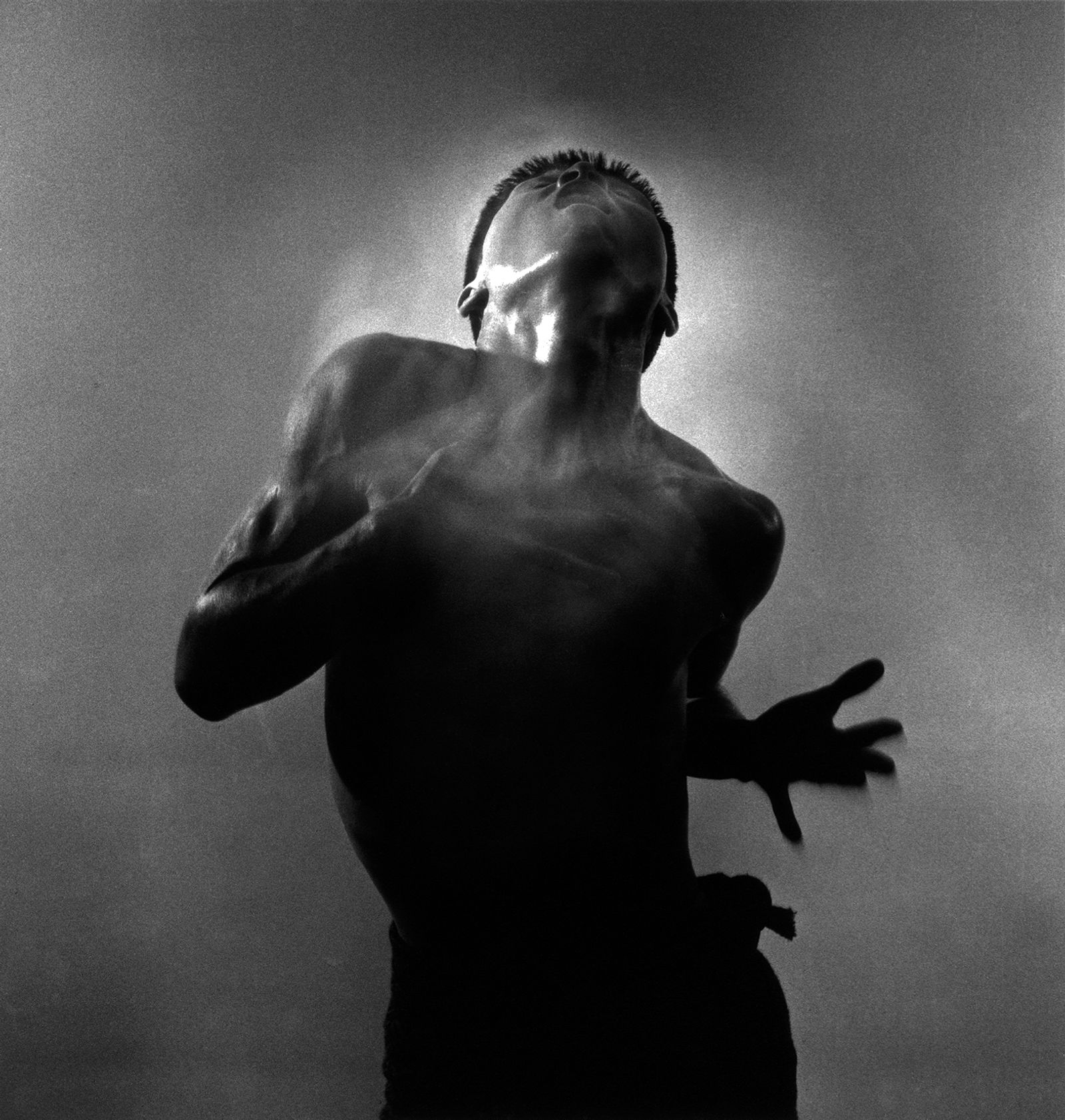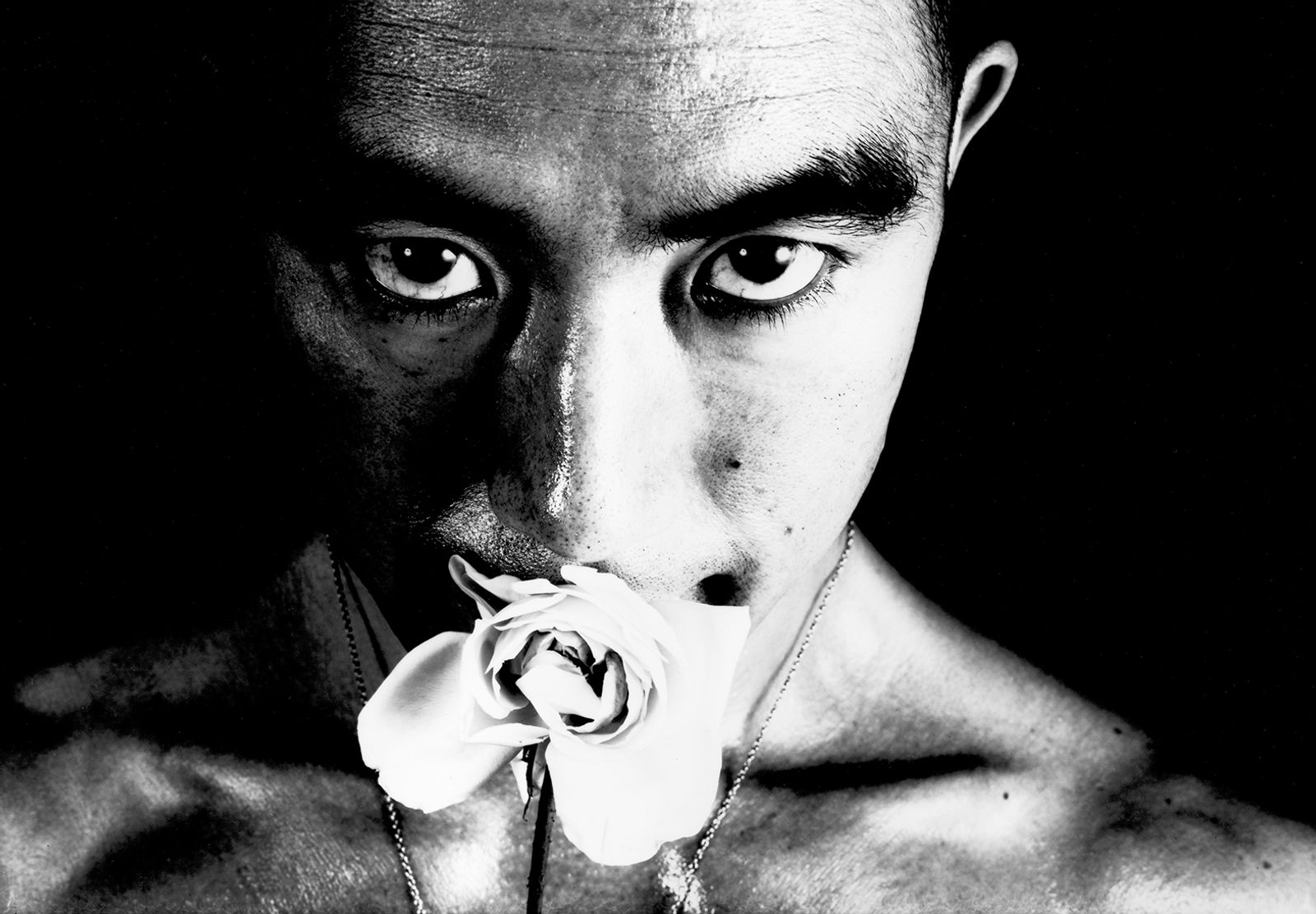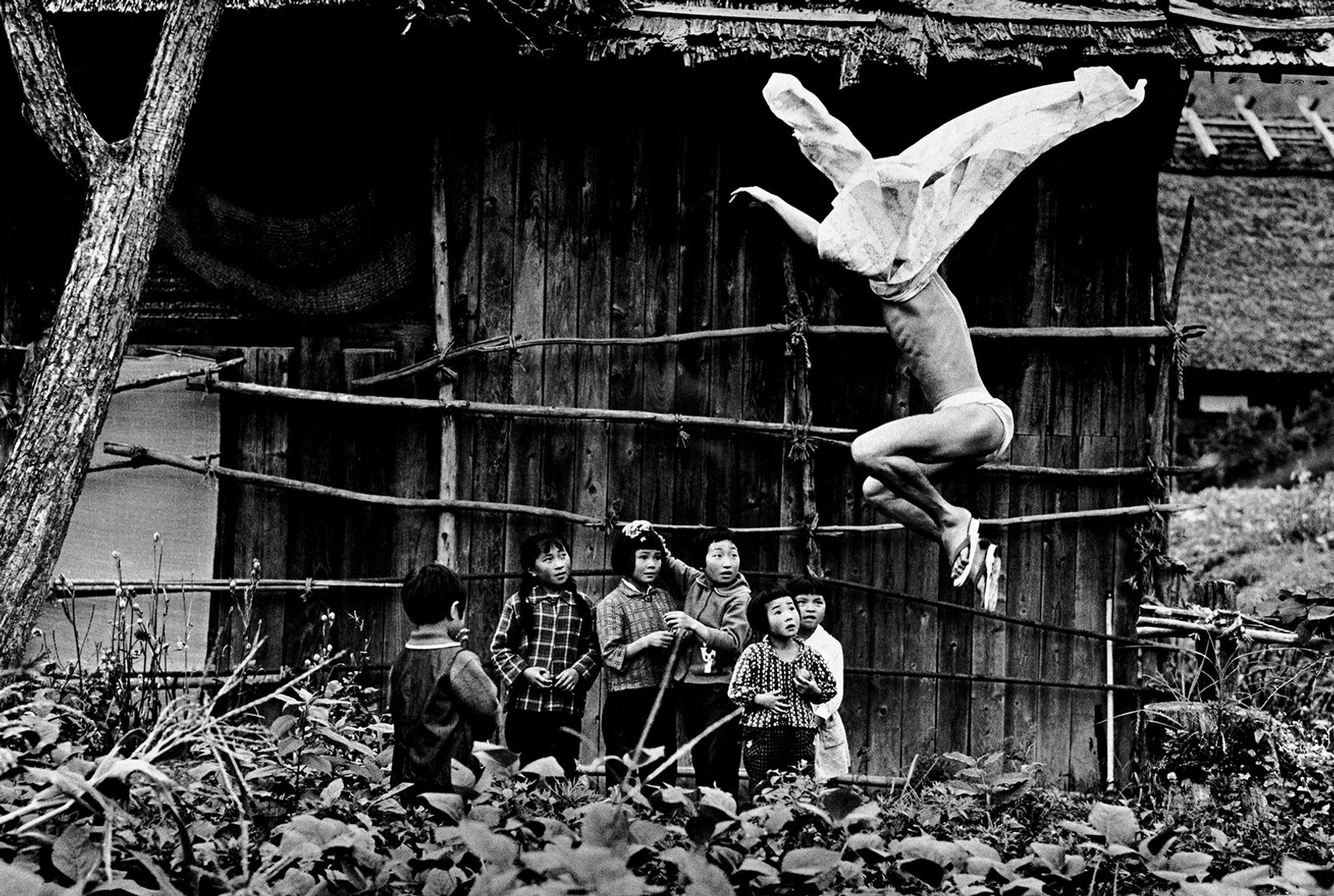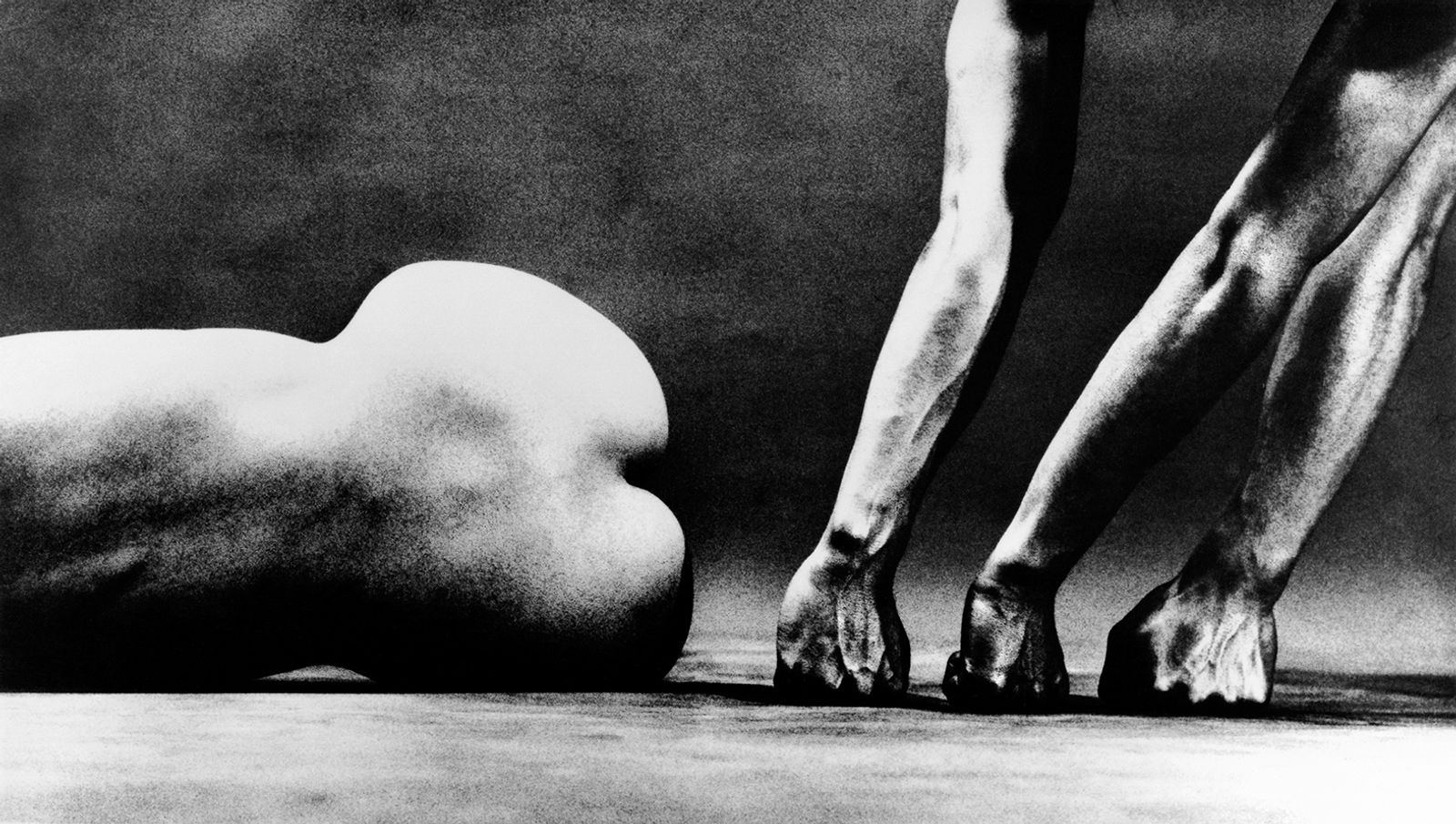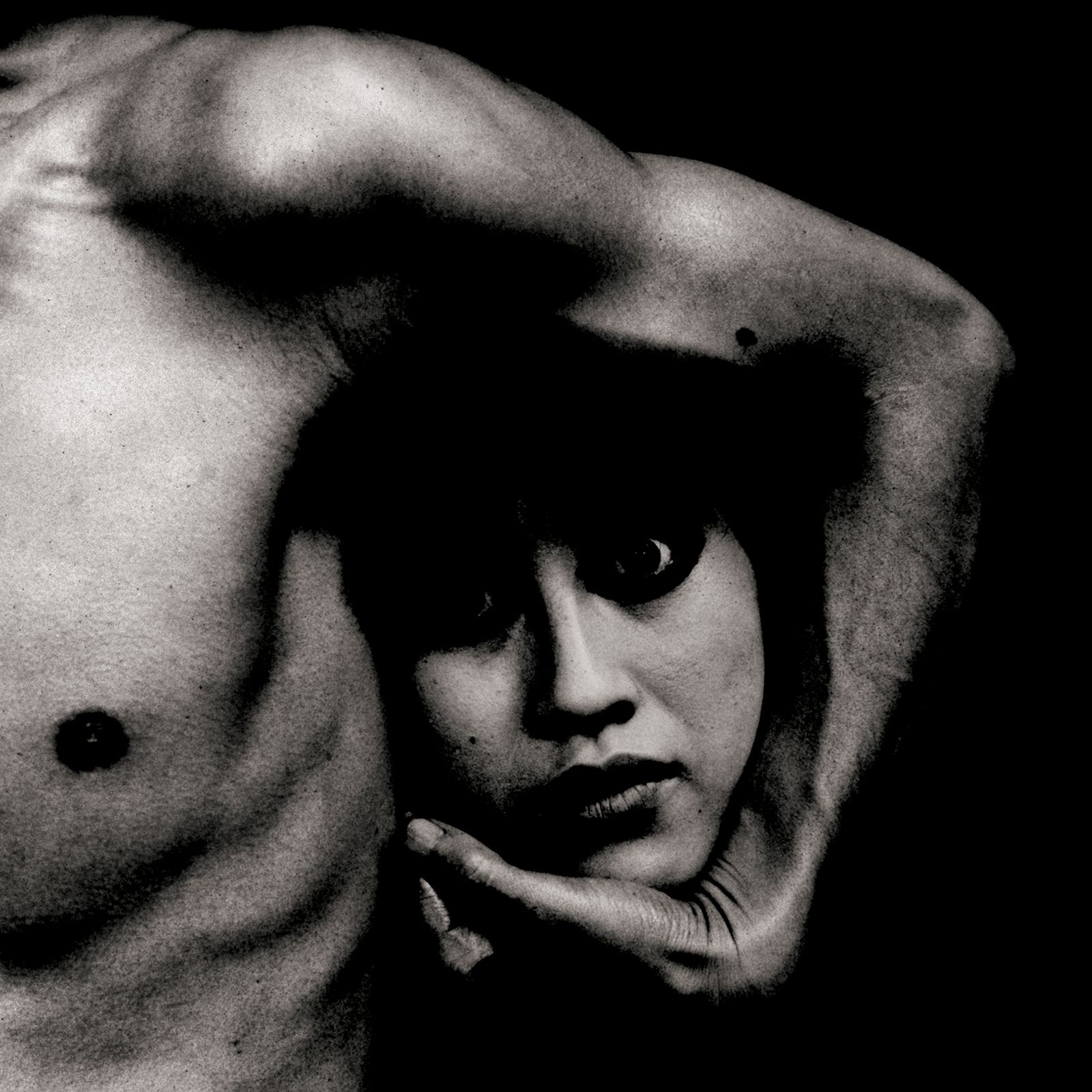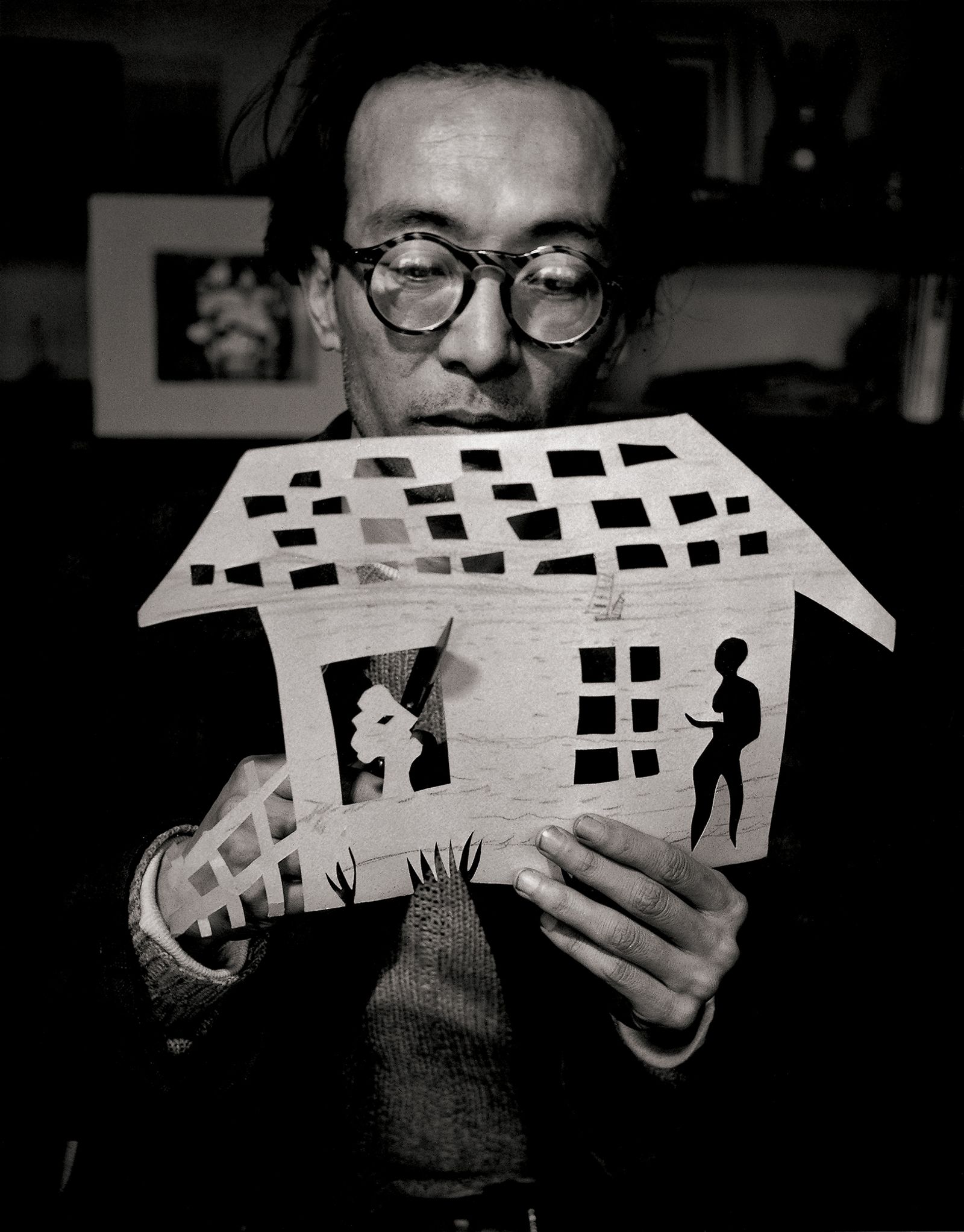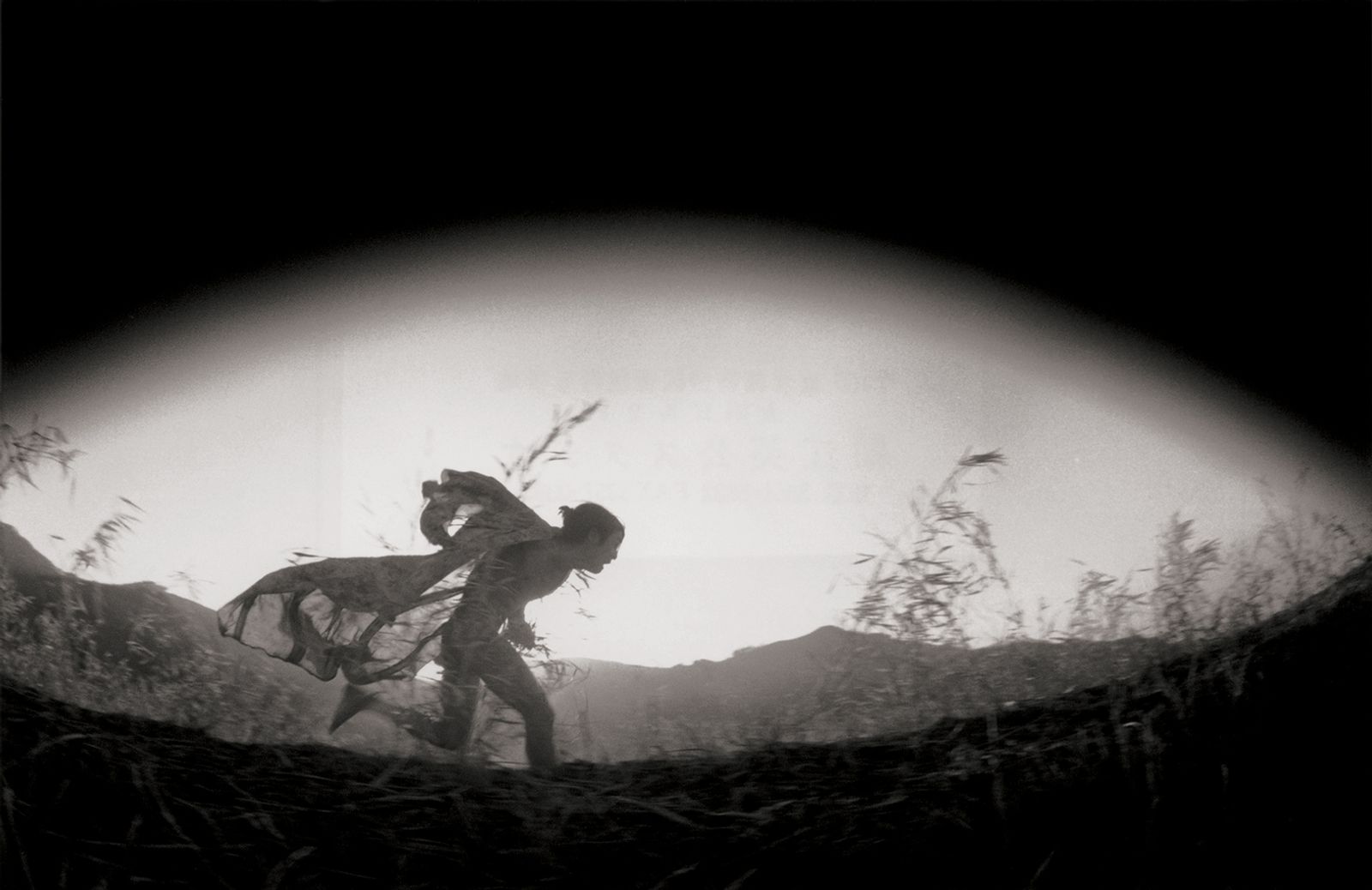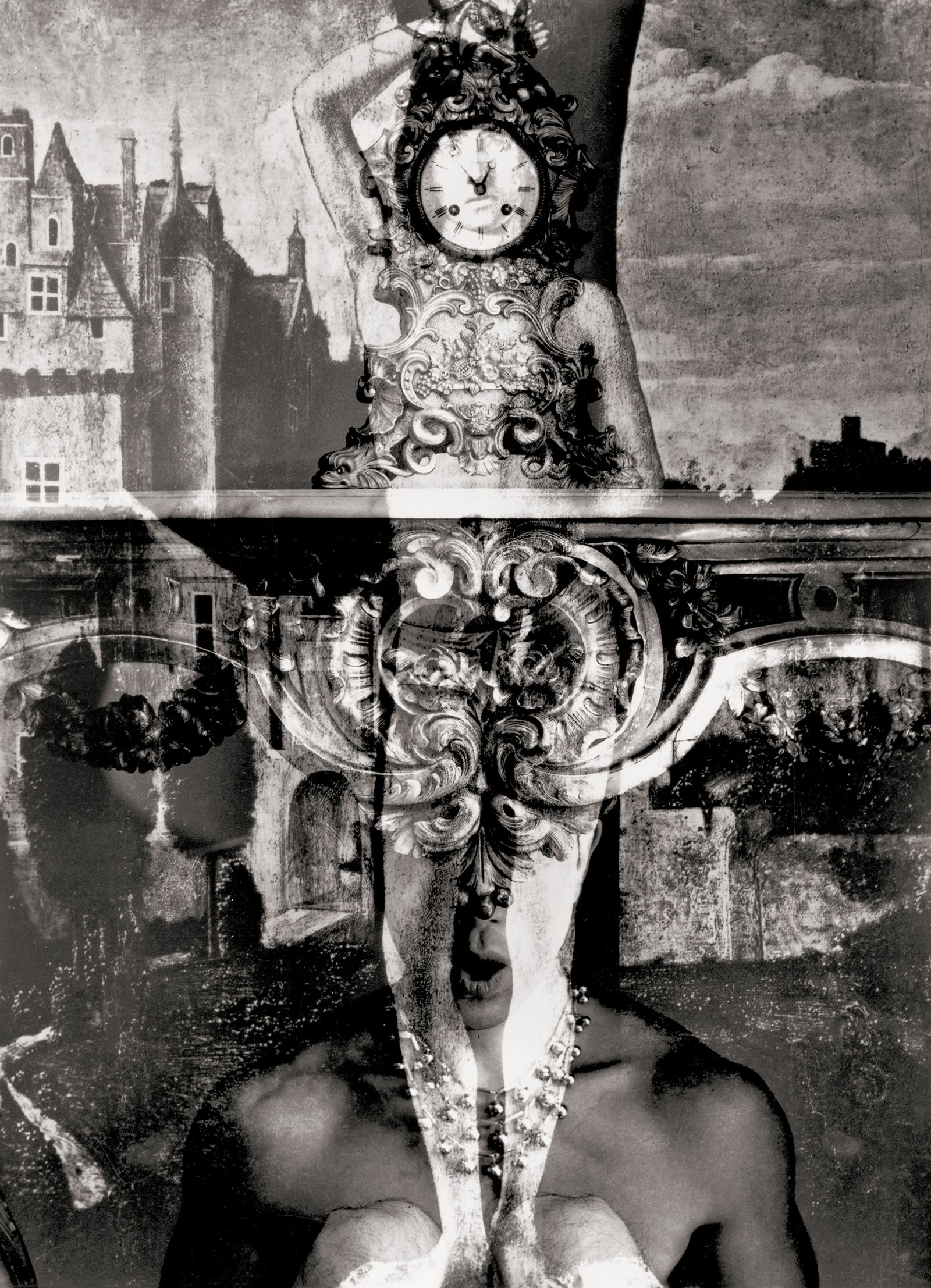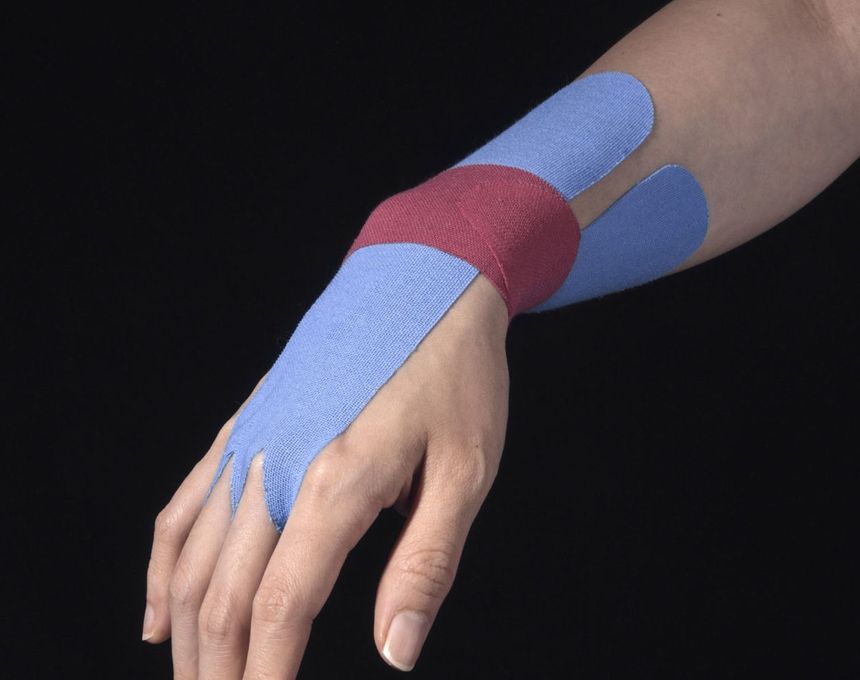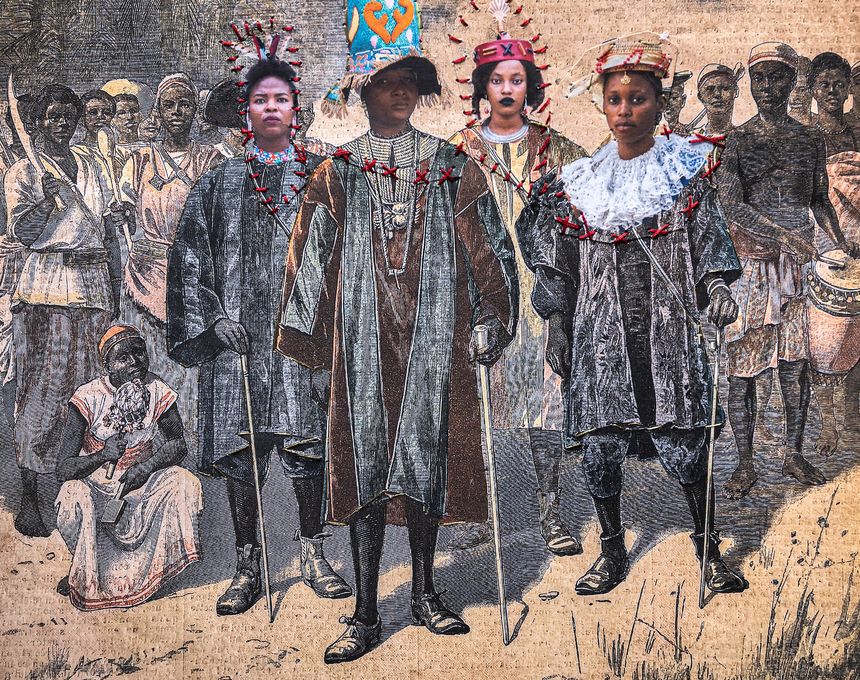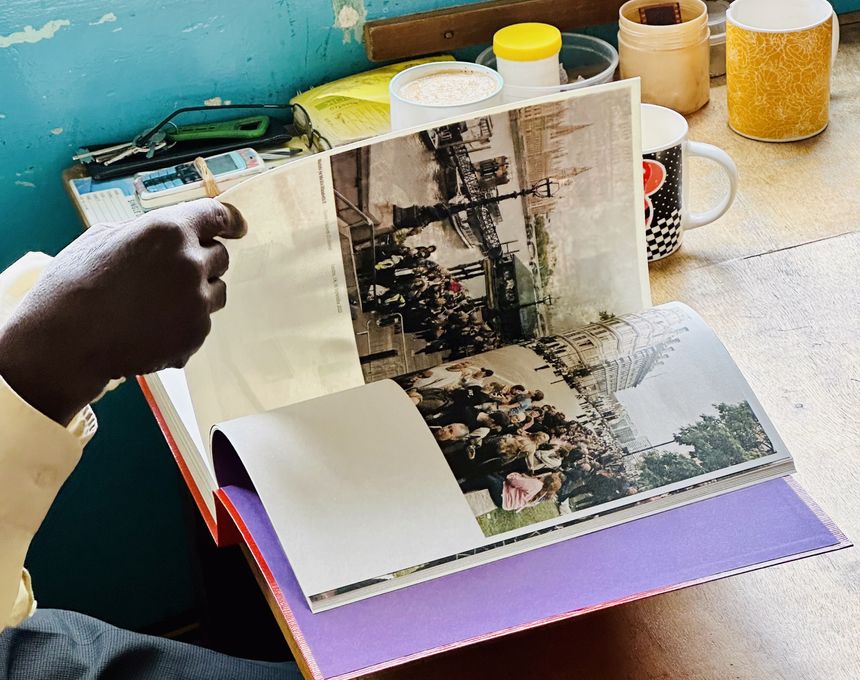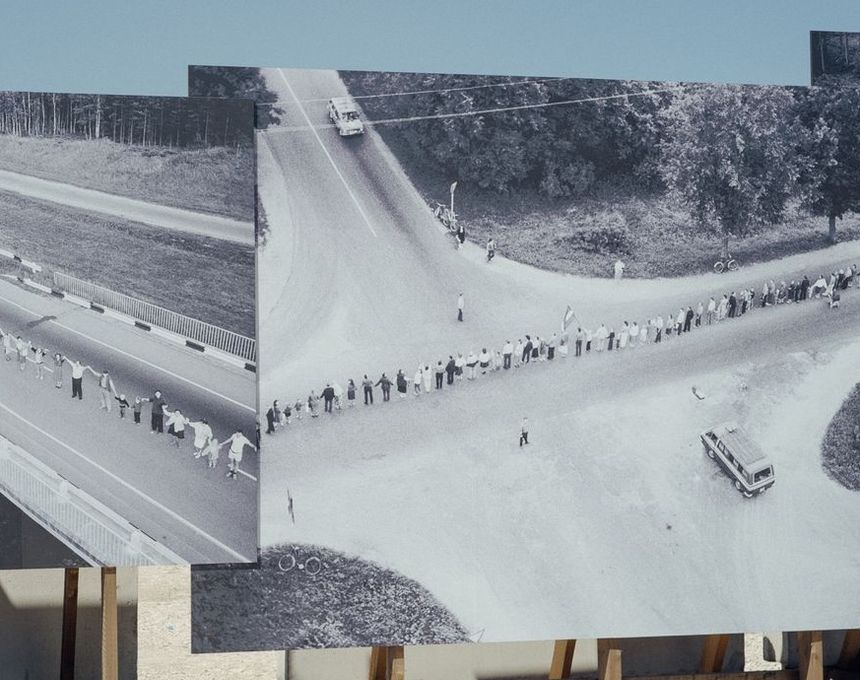Man, Woman, Writer, Dancer
-
Published8 Dec 2021
-
Author
The cover of the book shows an image from Hosoe’s Man and Woman series. It shows the body of butoh pioneer Tatsuko Hijitaka receding into deep shade, his spine arched to the right, his elbows tensed, his hands held like rasping claws, his neck arched back, his throat exposed as he leans his head back into a halo of light.
There’s movement in the image, there’s tension in the image, there’s another world in the image. Turn into the book and there are more images from Man, Woman; the crazy image of the lower part of a woman on one half set against three bare arms standing fist down on the floor on the other. There’s a strangeness to it, a surrealness that links to something in our subconscious, that is neither pretty nor polite, but elemental and filled with the cold vibrancy of desire and life.
Man and Woman is an early example of Hosoe’s approach to photography. It’s one that during the late 1950s (when Man and Woman was made) was at radical odds with the formal realism of the period.
This work was a collaboration between Hosoe and Hijitaka, a collaboration in which the very act of photographing was something Hosoe regarded as a physical and immersive practice. It’s a practice where the emotional connections between the photographer, the dancer, and the world around them involved a transformation of self, space, and the world one finds oneself in.
‘Instead of simply photographing a subject, he began to view himself as involved in the collaborative creation of a distinct space and time,’ writes Yasufumi Nakamori. ‘Armed with his camera, Hosoe created a rupture in the conventional time and space of reality, which Hijikata and Mishima could enter and perform within.’
This superb collection encapsulates these ideas of collaboration, immersion, and an intensity of practice through work that is rarely seen in print. You can see the shift in influences as Hosoe moves from the 1950s to the present day, and the ways in which he worked directly with artists, writers, iillustrators, designers and dancers.
In Embrace, you can see the influence of Bill Brandt’s Perspectives on Nudes, there’s a little bit of Sam Haskins in Man and Woman, William Klein is apparent, but most of all you can feel the driving force of Hosoe’s creative nature.
Ordeal by Roses shows Hosoe’s astonishing series of portraits of the renowned novelist, Yukio Mishima. In this series Mishima surrenders himself to Hosoe’s visual field and becomes part of a world fed by surrealism, renaissance art, sexuality, and Mishima himself. Mishima himself characterizes this place as “the reverse of the world we inhabit” and “a realm in which the murmurs of a pure undercurrent of lyriism flowed through an unseen conduit”.
One of the strong accompanying texts describes how Hosoe had an “extreme tension in (his) body” when he photographed, a tension that was essential to his collaborative practice. It’s a mystification of his work in some ways but a mystification that finds voice in images that do exist in their own time and space.
It’s a time and space that was fuelled by the intense visual language of 1960s Japan; Hosoe was part of the Vivo photographic agency along with Kikuji Kawada, Shomei Tomatsu, and Ikko Narahara. Hosoe was not one of the Provoke photographers who embraced the blurred, grainy and out-of-focus look which aimed ‘…to deconstruct photography, stripping away its originality and materiality, among other things, and through their image-text discourse “reach that ‘naked world’ where all the meanings and adjectives are stripped away from photography’.
Hosoe adopted some of the visual tropes of Provoke, but rather than stripping away the world, he created a new world that fed off the primal creative and sexual energies that were the foundation to his practice. ‘I would argue Hosoe’s work redefines lightness by embodying presence, expanding temporality and innovating the experience of dance,’ reads Christina Yang’s accompanying essay. ‘Eikoh Hosoe's photography is a performance where past present and future all exist on the same plane held in images and then many lives.”
---------------
All photos © Eikoh Hosoe
---------------
Eikoh Hosoe – Pioneering Post 1945 Japanese Photography
Published by Mack Books in September 2021
Embossed hardback // 25 x 32.5 cm // 400 pages // €65 £55 $80
---------------
Eikoh Hosoe is one of Japan's most iconic post-war photographers, recognized for his legendary collaborations and impeccable aesthetics. He has been the subject of numerous solo and group exhibitions in Japan and abroad, and his photography is held in the permanent collections of many public institutions including The Metropolitan Museum of Art, New York, The British Museum, London, The J. Paul Getty Museum, Los Angeles, and The Museum of Modern Art, San Francisco.
Colin Pantall is a photographer, writer and lecturer based in Bath, England. His latest book, All Quiet on the Home Front, focuses on family, fatherhood and the landscape. Follow him on Twitter and Instagram.
